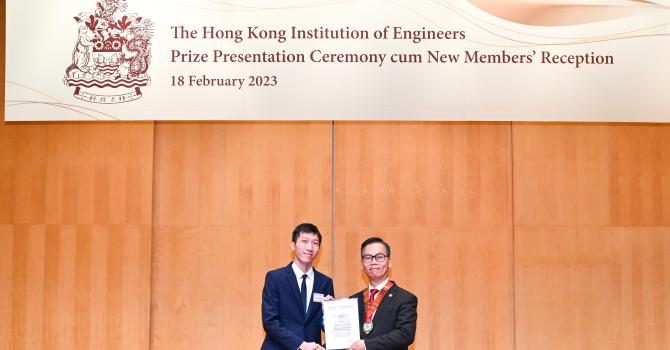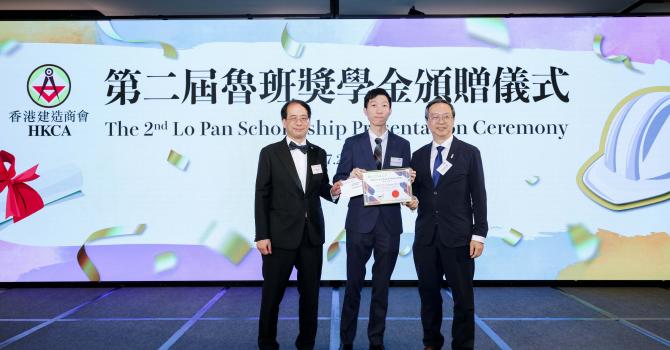Information Day 2022
On 5 November 2022, the Hong Kong University of Science and Technology (HKUST) held its first in-person Information Day in four years. Nearly 30,000 visitors—including prospective students—visited the campus to learn more about opportunities that HKUST offers. The Department of Civil and Environmental Engineering supported the event by providing consultation to the visitors on academics and other university-related issues. Particularly targeting the prospectuses, the Department presented various workshops and brought them on a tour of the facilities to help them better understand the field of civil engineering.
One of the workshops, “A Journey to Mars”, showcased how hydrogel can be used to bind soil together and—through 3D printing—form concrete. This technology helps maximize our ability to utilize resources on Mars if humans ever begin to colonize that planet. The ingenuity of the technology lies within the fact that, instead of carrying concrete blocks from Earth, we will simply need to bring with us the chemicals required to produce the hydrogel, and, upon landing on Mars, mix it with the abundant soil there to make concrete. The technology also adopts 3D printing for similar reasons: tools that are otherwise required for moulding concrete would be too heavy and expensive to transport to Mars.
The workshop was led by Professor Qiu Jishen and his team of talented civil engineering students. Participants at the workshop were first shown the hydrogel, a material which hardens as it loses water and becomes a binding agent. Then, Prof. Qiu and his team demonstrated how a structure of the hydrogel and sand could be produced via 3D printing: First, a few drops of the hydrogel was injected into a layer of sand; then, layers after layers of the material were printed and stacked on top of each other to form the structure. Five lucky participants then got to experience the process first-hand and create their own unique sand-hydrogel structures. That’s not all: the five lucky participants get to keep the products they made, which, however, need to be cured first in order for them to hold their shape, before they can be home-delivered.
The 30-minute laboratory tour also gave participants a chance to experience the more practical aspects of civil engineering, showcasing three of its very important disciplines: hydrosystems, geotechnical engineering, and environmental engineering.
The hydrosystems engineering part of the tour demonstrated an oft-observed phenomenon known as a “hydraulic jump,” which frequently occurs in open channel flow such as in spillways. Hydraulic jumps take place when a fluid (usually a flow of water) is discharged at high velocity into an area of lower velocity, causing the surface of the fluid to rise abruptly—over time, this can cause soil erosion. To minimize the impact of hydaulic jumps on the environment, an “energy dissipator” would be introduced. Such a device slows down the velocity of the inflow to within an acceptable limit, thereby protecting the areas downstream from erosion.
The Geotechnical Engineering part of the tour also demonstrated and explained a common phenomenon: how soil, which usually possesses considerable in-situ dry strength, can lose that strength when being oversaturated. The demonstration showed how a foundation, which had been planted in dry unsaturated soil, could lose its shear strength if enough water was added to saturate the soil—at the end of the demonstration, the initially sturdy foundation collapsed, as the shear strength in the saturated soil dwindled below a certain critical value.
For the Environmental Engineering part of the tour, a wastewater treatment system called “CE586” was showcased. The system uses precipitation, flocculation and subsequent sedimentation to remove dissolved substances, and, in the demonstration, wastewater flew into different tanks and passed through the various processes to have impurities removed from it. At the end of the various sections of the lab tour, participants were invited to ask questions relating to civil engineering studies at HKUST; the Department’s faculty and staff were there to answer their inquiries.
The Department also specially curated two quiz games on the topic of “smart city”. Consisting of nine multiple choice questions, the quiz game aimed to not only challenge the participants’ knowledge but also to survey how well the concept of smart city is trending among the general public. The quiz game, led by Professor Yang Jiachuan, was a fun and engaging way to promulgate the core concepts and ideas revolving around smart city as well as its benefits. The quiz was itself conducted in a “smart” way: instead of the conventional pen and paper, it used Mentimeter, a website that links users to the same task via just their smartphones. The participants were able to see not only their own answers but others’ as well in realtime, so they were able to collaborate and discuss their ideas. The top ten winners of the quiz—the top “thinkers”—received a gift box from the Department.
The fun-filled Information Day was a great success, thanks to the support from many staff and faculty members as well as students. The day was a big hit with the visitors; more importantly, the series of events passed on a great deal of very useful and relevant information to prospective students and other members of the public.

